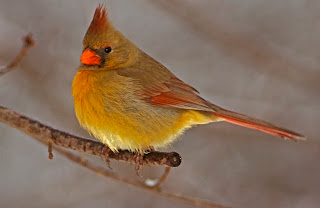Drought is tough on wildlife. Water sources dwindle and food sources may become in short supply as plants do not grow vigorously or do not produce seed or fruit. In times like these, such as the droughts we have been having, and will continue to happen, you feel like you should feed wildlife to keep them alive and healthy. We all know that healthy wildlife go into breeding condition better, can withstand the long and cold winter better, and are generally better off. But and here is the big one: it is probably unwise to feed wildlife, particularly things like quail and turkey and even deer during droughts. Why? There are a myriad of reasons, but you have to have a general understanding of wildlife population dynamics and consider that this is part of the normal cycle and by artificially keeping wildlife in good condition through feeding, you could be potentially setting yourself up for a huge population crash in the future when food supplies dwindle or other factors bring the population back to what the environment can support, something we call carrying capacity. Of a more immediate concern with the drought this year is feeding corn. Drought increases the possibility of aflatoxin poisoning in wildlife. Alfatoxin, I never heard of it and why is it a concern for feeding wildlife? Aflatoxins are fungi, usually Aspergillus flavus and A. parasiticus, that are associated with grain, particularly with corn (although it also occurs in wheat, millet, and peanuts and other crops), and it most often associated with wildlife problems in the southeastern United States. It is usually present more during drought and with the corn harvest just beginning in Kentucky, we are already seeing some corn going to poultry facilities that cannot be used because the aflatoxin levels are too high. When aflatoxin levels become elevated and can't be fed to domestic animals, where can producers sell this grain? One source may in the form of wildlife or deer feed corn. A study done about a decade ago in Texas found that 44% of corn bagged and sold as deer or wildlife feed had aflatoxin levels that would be considered hazardous for wildlife. In addition, storage also affects aflatoxin levels and corn stored with a moisture content of 14% or more, relative humidity of 70% and temperature greater than 70 F can increase concentrations of aflatoxin. Aflatoxicosis occurs primarily in the southeastern states and generally waterfowl, ducks and geese, are affected the most when they get into corn fields that have residual seeds from harvesting that are remaining in the field. However, wild turkeys, quail and songbirds have also been shown to be affected and field symptoms in birds include lethargy, blindness, inability to fly, tremors, wing flapping and quite often the birds are simply found dead. Affects in deer are typically manifested by not eating becoming weak and anorexic, fidgety, uneasy demeanor and easily excited, diarrhea, and ultimately death. Because aflatoxicosis appears more during drought years, landowners, hunters, and bird feeding enthusiasts should be cautious when deciding to feed corn or other grains.
Welcome to the Kentucky Native Plant and Wildlife Blog.
Welcome to the Kentucky Native Plant and Wildlife Blog.
The purpose of this blog is to provide information on using native plants in the landscape, issues related to invasive exotic plants, urban wildlife management, and wildlife damage management. It is my intention that this information will assist you in deciphering the multitude of information circulating around the web and condense in some meaningful method as it relates to Kentucky. In addition, I hope to highlight a native plant that can be used in the landscape.


No comments:
Post a Comment